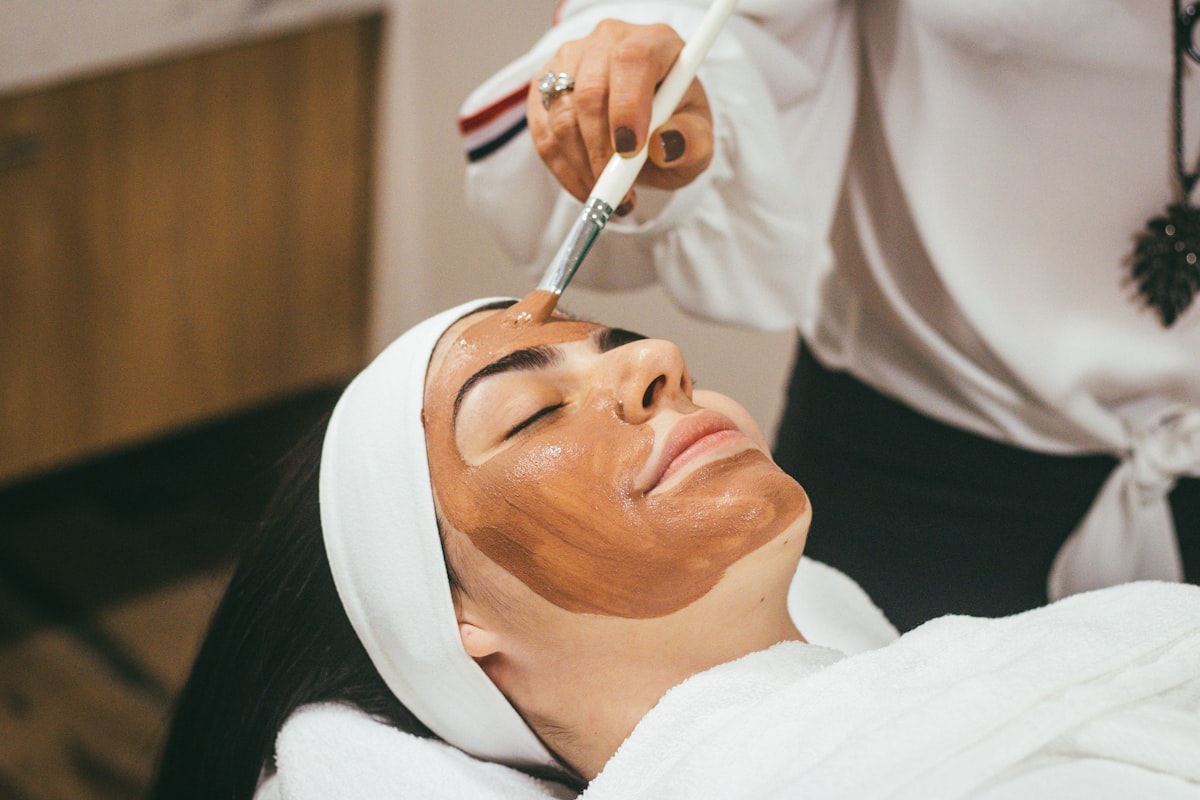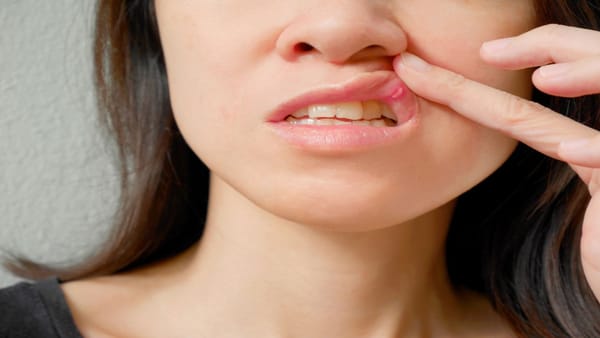How To Get Glowing Skin Naturally
Nourish Your Glow: Learn the art of getting glowing skin naturally. From the benefits of aloe vera to the magic of facial massage, explore holistic practices that nourish your skin, leaving you with a healthy and radiant complexion. 🌸💆♀️ #NaturallyGlowingSkin #SkinCareRoutine

Glowing and beautiful skin is the desire of everyone. Skin glow refers to the appearance of healthy, radiant, and youthful-looking skin. Achieving a glowy skin is a common goal for many people, and there are several things you can do to help improve the appearance of your skin.
- Proper skincare: A consistent skincare routine that includes cleansing, exfoliating, moisturizing and protecting your skin from sun exposure can help to keep your skin healthy and glowing.
- Hydration: Drinking plenty of water and eating foods that are high in water content can help to hydrate your skin from within, making it look plump and glowing.
- Sleep: Getting enough sleep is important for overall health, and it can also help to improve the appearance of your skin. Sleep helps to repair and rejuvenate the skin, and lack of sleep can lead to dull, tired-looking skin.
- Exercise: Regular exercise can help to increase blood flow to the skin, bringing oxygen and nutrients to the skin cells.
- Diet: Eating a diet rich in fruits and vegetables can provide the skin with essential vitamins and minerals that can help to improve the overall health of the skin.
- Avoid smoking and excessive alcohol consumption, which can dehydrate the skin and make it look dull.
It’s also worth noting that genetics plays a role in the overall health and appearance of the skin. However, by following a healthy lifestyle and using the right skincare products, you can help improve the appearance of your skin and achieve a glowing complexion.
Everyone wants to be beautiful and handsome. To get clear, fair, and glowing skin, Ayurveda suggests some most used herbal treatments. You can use the below-mentioned especially relevant natural Home remedies for glowing skin.

Home Remedies For Glowing Skin
Turmeric and Gram Flour Face pack
1. Haldi (turmeric) and besan (gram flour) are both commonly used ingredients in traditional Indian skincare. When mixed together, they can make an effective face pack for brightening and nourishing the skin.
To make the face pack, mix together 2 tablespoons of besan with enough haldi and water or milk to form a thick paste. Apply the paste to your face and leave it on for 15-20 minutes. Rinse it off with warm water and pat your skin dry.
Turmeric contains antioxidants and anti-inflammatory properties that can help to brighten the skin and reduce pigmentation. Besan is a gentle exfoliant that can help to remove dead skin cells and leave the skin feeling soft and smooth. The face pack is also known for helping to reduce acne and other blemishes.
Herbs Mixture
2. In summer, sunlight affects your skin a lot, and you lose the glow of your skin. So to intact your skin colour, Grind the leaves of mango and Jamun (Syzygium cumini) with Haldi (Turmeric, Curcuma longa) and Gur (Treacle) to prepare a paste. Finally, apply this paste to the skin to get perfect glowing skin. Hence this paste is most helpful to get rid of dry skin face.
Aloe Vera
3. Aloe vera gel can be used to help achieve a glowing complexion. The gel is rich in antioxidants, enzymes, and vitamins that can help to nourish and hydrate the skin. It can also help to reduce inflammation, which can lead to a brighter and more even skin tone.
One way to use aloe vera gel for glowing skin is to apply the gel directly to the face as a moisturizer. It can be applied after cleansing and before applying makeup, or can be used as a nighttime moisturizer.
Another way to use aloe vera gel for glowing skin is to make a face mask by mixing the gel with other ingredients such as honey, yogurt, or lemon juice. These ingredients can also be beneficial for the skin, and can help to boost the effectiveness of the aloe vera gel.
It’s also important to note that Aloe vera gel can be used to soothe sunburns and reduce redness caused by sun exposure, which can contribute to a dull complexion.
Neem
4. A neem face pack can be an effective way to achieve a glowing complexion. Neem is known for its antibacterial and anti-inflammatory properties, which can help to clear up acne and other blemishes, leaving the skin looking brighter and smoother.
To make a neem face pack, you will need:
- 1 tablespoon of neem powder or grinded neem leaves
- 1 tablespoon of turmeric powder
- 1 tablespoon of yogurt or milk
Mix all the ingredients together to form a paste. Apply the paste to your face and leave it on for 15-20 minutes. Rinse it off with warm water and pat your skin dry.
Alternatively, you can also make a neem face pack by mixing neem powder with honey and applying it to your face. Leave it on for 15-20 minutes and then rinse it off with warm water.
This face pack can be used once or twice a week, it’s also recommended to patch test before using any neem products as some people may have an allergic reaction to neem.
It’s important to note that neem is known to have a strong smell, if you find the smell unpleasant, you can add some other ingredients such as rose water or lemon juice to mask the smell.
Tulsi
5. Tulsi, also known as Holy Basil, is believed to be beneficial for achieving a glowing complexion. It has been traditionally used in Ayurveda for skin care, it’s known for its anti-inflammatory, antioxidant and antimicrobial properties that can help to soothe irritated skin and reduce redness.
One way to use tulsi for glowing skin is to make a face pack by mixing tulsi powder or grinded tulsi leaves with other ingredients such as honey, yogurt, or rose water. Apply this mixture to your face and leave it on for 15-20 minutes. Rinse it off with warm water and pat your skin dry.
Another way to use tulsi for glowing skin is to make a tulsi face toner by steeping tulsi leaves in water and then using the water as a toner after cleaning your face.
You can also make a tulsi face oil by steeping tulsi leaves in a carrier oil like coconut oil or sesame oil, this oil can be used as a night moisturizer.
It’s also important to note that tulsi can be taken internally in the form of tea or supplements, it is believed to be beneficial for overall health and can contribute to a healthy and glowing complexion.
Sandalwood
6. Sandalwood is traditionally used for its cooling and soothing properties, it can be used to reduce inflammation and promote a clear, glowing complexion. The powder of sandalwood can be mixed with other ingredients to make a face pack.
One way to use sandalwood for glowing skin is to make a face pack by mixing sandalwood powder with rose water or milk to form a paste. Apply this paste to your face and leave it on for 15-20 minutes. Rinse it off with warm water and pat your skin dry. This face pack can be used once or twice a week.
Another way to use sandalwood for glowing skin is to make a sandalwood face oil by mixing sandalwood powder with a carrier oil such as jojoba or sweet almond oil, this oil can be used as a night moisturizer.
Sandalwood is also known for its astringent properties, it can be used to reduce excess oil and tighten the pores, which can help to prevent acne and other blemishes, leaving the skin looking clearer and brighter.
It’s also important to note that sandalwood oil can also be used in aromatherapy, it is believed to have a calming effect on the mind and body which can help to reduce stress and anxiety, and promote overall well-being, which can contribute to a healthy and glowing complexion.
Rose
7. Rose is believed to be beneficial for achieving a glowing complexion. Rose petals contain antioxidants and anti-inflammatory properties, they can be used to hydrate and soothe the skin, leaving it looking bright and refreshed.
One way to use rose for glowing skin is to make a face pack by mixing rose petal powder or grinded fresh rose petals with other ingredients such as honey, yogurt, or sandalwood powder. Apply this mixture to your face and leave it on for 15-20 minutes. Rinse it off with warm water and pat your skin dry. Rose water helps to balance the pH of the skin and acts as a natural toner.
Another way to use roses for glowing skin is to make a rose water toner by steeping rose petals in water, then strain the petals and use the water as a toner after cleaning your face. Rose water can also be used as a moisturizer, it can help to hydrate and soothe the skin.
Rose oil can also be used in aromatherapy, it is believed to have a calming effect on the mind and body which can help to reduce stress and anxiety, and promote overall well-being, which can contribute to a healthy and glowing complexion.
It’s also important to note that rose oil can be used as a carrier oil to mix with other essential oils to make a face oil, it is also known for its anti-aging properties and can be used to reduce wrinkles, fine lines and improve the overall skin complexion.
Chamomile
8. Chamomile is known for its calming and soothing properties, it can be used to reduce redness and irritation, leaving the skin looking calm and refreshed. The flowers of chamomile can be used for skin care, Chamomile tea bags can also be used for skin care.
One way to use chamomile for glowing skin is to make a face pack by steeping chamomile tea bags in hot water, then let them cool and place them on your face for 10-15 minutes. This can help to reduce redness and soothe irritated skin.
Another way to use chamomile for glowing skin is to make a chamomile face toner by steeping chamomile flowers or chamomile tea bags in water and then using the water as a toner after cleaning your face.
You can also make chamomile face oil by steeping chamomile flowers in a carrier oil like coconut oil or sweet almond oil, this oil can be used as a night moisturizer.
It’s also important to note that chamomile can be taken internally in the form of tea or supplements, it is believed to be beneficial for overall health and can contribute to a healthy and glowing complexion.
It’s recommended to consult a healthcare professional before using chamomile internally.
Banyan
9. The banyan tree, also known as the Indian banyan or Ficus benghalensis, is a tree native to India and Bangladesh. It is often considered sacred in Hinduism and is known for its large and extensive root system.
There are few scientific studies on the effects of banyan tree on skin. However, the leaves and bark of the banyan tree have been used in traditional medicine to treat a variety of skin conditions, such as eczema, psoriasis, and scabies. The leaves contain flavonoids and tannins which are known for its anti-inflammatory, antioxidant, and anti-aging properties.
Banyan tree latex is also used topically on the skin to treat ringworm, scabies, and other fungal infections. Rub Bargad (Ficus Benghalensis) milk on the face with a fingertip to get glowing, fair skin.
It’s important to note that while traditional medicine may have used banyan tree for skin care, more research is needed to support these claims. It’s always best to consult a dermatologist before using any new skincare product.
Lemon and Raw Milk
10. Lemon juice and raw milk are both commonly used in traditional skincare practices for their potential benefits for the skin.
Lemon juice is a natural source of vitamin C, which is known for its antioxidant properties. Vitamin C can help protect the skin from damage caused by free radicals, which can lead to premature aging. Lemon juice can also be used as a natural exfoliant to help remove dead skin cells, leaving the skin looking brighter and smoother.
Raw milk is rich in lactic acid, which is a mild alpha-hydroxy acid (AHA) that can help exfoliate the skin and reduce the appearance of fine lines and wrinkles. It also contains vitamins, minerals, and enzymes that can nourish and moisturize the skin.
When combined, the acid in the lemon juice and lactic acid from raw milk can help brighten and soften the skin. However, it’s important to note that using raw milk on the skin may cause irritation for some people, especially if you have sensitive skin. It’s always best to do a patch test first before applying it on your face, and if you experience any redness or itching, discontinue use.
Eating Mango Fruit
11. Mangoes are a delicious tropical fruit that are known to be rich in vitamins, minerals, and antioxidants that can be beneficial for the skin.
Mangoes are a great source of vitamin A, which is known to improve the health of the skin and can help reduce the appearance of fine lines and wrinkles. They also contain vitamin C, which is an antioxidant that can help protect the skin from damage caused by free radicals. Additionally, mangoes are a good source of beta-carotene, which can help improve the texture and tone of the skin.
Mangoes can also be used as a natural exfoliant to remove dead skin cells and leave the skin looking brighter and smoother. Some people may use mango pulp or juice as a face mask, or apply mashed mango on the skin as a moisturizer.
Eating mango can also be beneficial for the skin, as it can help to hydrate the body and improve overall skin health. The high levels of antioxidants, vitamins and minerals found in mango can help to protect your skin from damage and promote a healthy, youthful glow.
Drink Plenty Water
12. Drinking plenty of water can help improve the appearance of your skin. When your body is properly hydrated, your skin is better able to retain moisture, which can make it look more plump and glowing. Additionally, staying hydrated can help flush toxins from your body, which can lead to clearer, healthier-looking skin. It’s recommended to drink at least 8 cups (64 ounces) of water per day to maintain proper hydration.
Watermelon
13. Watermelon contains lycopene that helps you to get healthy glowing skin.
It is a delicious fruit that is known to be high in water content and various nutrients that can be beneficial for the skin.
Watermelon is a great source of vitamin C, which is an antioxidant that can help protect the skin from damage caused by free radicals. It also contains vitamin A, which can help improve the health of the skin and reduce the appearance of fine lines and wrinkles. Additionally, watermelon contains lycopene, a powerful antioxidant that can help protect the skin from sun damage.
Watermelon can also be used as a natural exfoliant to remove dead skin cells and leave the skin looking brighter and smoother. Some people may use watermelon juice as a toner, or apply mashed watermelon on the skin as a face mask.
Eating watermelon can also be beneficial for the skin, as it can help to hydrate the body and improve overall skin health. The high levels of antioxidants, vitamins and minerals found in watermelon can help to protect your skin from damage and promote a healthy, youthful glow.
Milk and milk products
14. Milk and its products is also a complete food for the human body. It contains calcium and is rich in lactic acid, which results in soft and glowing skin.
Milk is a natural skincare ingredient that has been used for centuries for its potential benefits for the skin. It contains lactic acid, a mild alpha-hydroxy acid (AHA) that can help exfoliate the skin and reduce the appearance of fine lines and wrinkles. It also contains vitamins, minerals, and enzymes that can nourish and moisturize the skin.
Raw milk is believed to be more beneficial than pasteurized milk because it contains more enzymes and other beneficial nutrients. However, using raw milk on the skin may cause irritation for some people, especially if you have sensitive skin. It’s always best to do a patch test first before applying it on your face, and if you experience any redness or itching, discontinue use.
Milk is also commonly used in the form of milk baths and milk scrubs which can be used to soften, moisturize, and exfoliate the skin. It is also used as a natural cleanser, to remove dirt and makeup.
These are the best ayurvedic home remedies for glowing skin, and skin glows with natural herbs that help you to make you beautiful.
It is recommended to do a patch test before applying the pack to your face, as some people may have an allergic reaction to certain skincare herbs.



